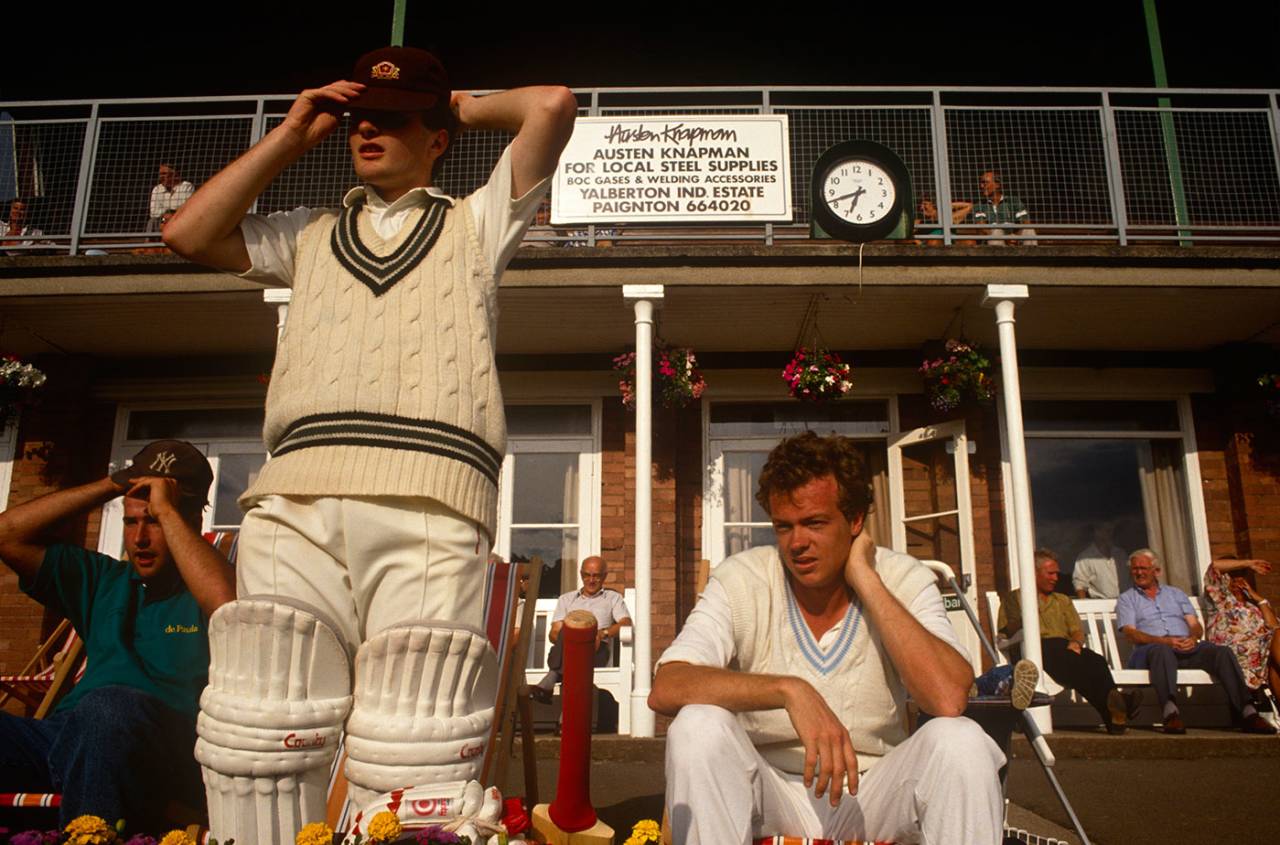"One brings two," as every club batsman will have heard on his approach to the wicket, as the close fielders endeavour to exploit their long-delayed breakthrough. "One brings two, lads. One brings two."
Nevertheless, it seems likely to have been coincidence, rather than design, that resulted in two detective dramas on UK television in quick succession airing episodes centred around suspicious cricket-club deaths. First to the wicket was ITV's Midsomer Murders, featuring the discovery of a star batsman killed by a bowling machine cranked up to maximum. A few weeks later, the BBC got in on the act - probably the closest they get to showing cricket these days - with Death in Paradise's Humphrey Goodman (Kris Marshall) investigating an on-field shooting on the fictional Caribbean island of Saint-Marie.
Notwithstanding the difference in location, both programmes start in a similar, moderately predictable way. A match is in progress. The soon-to-be-dispatched player is at the wicket. He can win the game with a boundary. Will he? He does! General jubilation. But what is this? As he returns to the pavilion, a team-mate makes a suspiciously threatening remark. Barely before the credits have finished rolling, his lifeless corpse will be discovered. Foul play - or should that be "not cricket"? Let the clichés commence.
From there, thankfully, the two stories diverge. Midsomer Murders is the more ambitious of the two, opening up topical themes, one being match-fixing, and the other being the eternal tension between modernity and traditionalism. This episode, "Last Man Out", features a stereotypical old MCC member (impishly named St John Beachwood), a cricket entrepreneur, and a former England Women's captain - suspiciously reminiscent of the late Rachael Heyhoe-Flint in stature, if not in personality - along with an undercover detective who resembles a scruffier Tim Murtagh (and with less batting ability). The current long-form v short-form debate crops up, with a disguised T20 ("C-10") tournament dividing the village into vehemently pro and anti factions. If only villages in real life cared so much either way - and if they had access to the splendid facilities of Sir Paul Getty's Wormsley - cricket might be in better health.
Unfortunately, despite the ITV programme's prior dabbling with cricket on a number of occasions, where it falls down is its action sequences. Several shots of bowling, batting, and so on, feature telltale cuts away at the point of delivery, or the point of contact. Even with such editing, the movements of the actors tend to suggest that their talents on the screen outweigh those on the pitch. In the net scenes, where in real life auditory feedback is nearly as distinctive as visual, the mistimed delay between the sounds of ball on floor and bat jars on a trained ear. Nevertheless the programme redeems itself to some extent with the excellent selection of cricket books displayed: Simon Wilde, Marcus Berkmann, and Michael Simkins (who himself appeared in a Midsomer Murders instalment) are all sighted, along with a long line of Wisdens. It appears at least one researcher has some appreciation for the game's literary tradition.
The BBC offering, Death in Paradise, by contrast, with half an hour less to pad out, keeps it simpler. It also limits its on-field action shots to the first few minutes - and judicious cuts also feature - but on the whole, even in that short slot, the shape of the players' movements lend greater verisimilitude than anything seen in "Last Man Out". There is a slight oddity in one team wearing whites and the other wearing coloured clothing, but that could reasonably be explained away by the simple fact that it's a benefit match. The same reason serves to justify the highly dubious lbw decision - come on, ump, he's bowling right-arm round the wicket - and the apparent lack of application by the wicketkeeper when presented with an easy stumping opportunity.
There is actually little cricket-specific detail for the rest of the episode, and the denouement is relatively predictable; nevertheless it entices in a way that "Last Man Out", on the whole, does not. Much of this is due to the instantly likeable Humphrey Goodman, whose greatest cricketing feat was the compilation of a "battling seven not out" for his school's Under-14 3rd XI that "almost saved the draw"- a level of ability with which many amateur cricketers will immediately identify.
Despite all the chicanery, the motives of the killers in both episodes ultimately end up having little to do with the game of cricket. This should be a surprise for anyone familiar with the recreational game, as potential motives for murder outnumber actual runs.
Batsmen seethe at scorers mis-assigning runs. Scorers hate anyone who disturbs the library-like confines of the scorebox. Secretaries nurture resentment towards perennial match-fee dodgers. Outwardly generous souls never forget the jug avoiders. Everyone hates the umpires. It's a wonder, frankly, that anyone survives at all in the bubbling cauldron of malice that is club cricket.
Perhaps one day we'll see a truly realistic detective drama set in a cricket club - say one where the perpetrator is driven to murder by his victim's incessant clamour. "One brings two, lads. One brings two," parrots long-off, moments before he disappears under the mysteriously toppled iron sightscreen.
Liam Cromar is a freelance cricket writer based in Herefordshire, UK. @LiamCromar
